Downloadable poster of an ALMA observation of Europa. This intriguing image of Jupiter’s moon, Europa, was acquired with the Atacama Large Millimeter/submillimeter Array (ALMA), a state-of-the-art, radio-wavelength telescope array operated by an international partnership in the high elevation Chilean Andes. The highlighted region (white circle) is associated with a thermal anomaly and a potential water plume detected by both the Hubble Space Telescope and the unmanned Galileo spacecraft that studied Jupiter and its environment for eight years (1995-2003). The deep ocean that lies beneath Europa’s icy surface is perhaps the most promising place to search for present-day environments suitable for life.
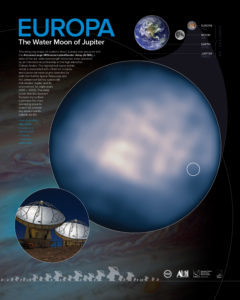
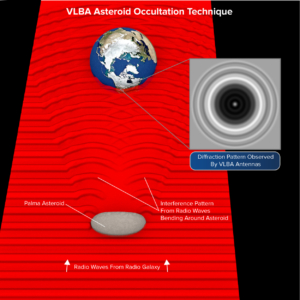
VLBA Sees Diffraction Patterns Caused by Asteroid
Radio waves from a distant galaxy were blocked from view by an asteroid in our Solar System. However, in a process called diffraction, waves bent around the asteroid and interacted to form a pattern of bright and dark circles. Astronomers analyzed this pattern to learn new details about the asteroid’s. size, shape, and orbit.
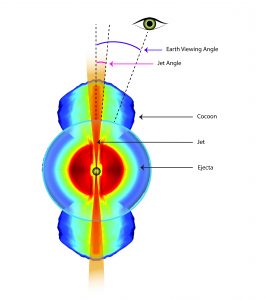
Jets that Appear Faster than Light
During the aftermath of the recent neutron star merger, ejecta from an initial explosion formed a shell around the black hole formed from the merger. A jet of material propelled from a disk surrounding the black hole first interacted with the ejecta material to form a broad “cocoon.” Later, the jet broke through to emerge into interstellar space, where its extremely fast motion became apparent. The jet appeared to be traveling four times the speed of light. This phenomenon is known as superluminal motion. It arises due to the jet traveling at nearly the speed of light and at a small angle relative to our line of sight. Since the jet is moving at nearly the speed of light, when a particle within the jet emits a bit of light the particle doesn’t fall far behind the bit of light it emitted. When a long time passes and the particle emits a second bit of light, it will do so close to the first one and when the light reaches us the particle will appear to have been moving faster than light.
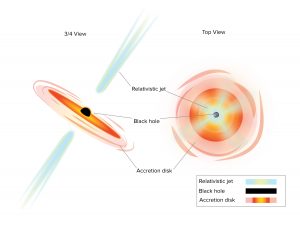
AGNs Seen at Different Angles
One type of active galactic nuclei (AGN) — a supermassive black hole that is gobbling up gas and dust — is called a quasar. Quasars got their name because, when first discovered, they were called “quasi-stellar objects” meaning “star-like.” They are very powerful sources of radiation, sometimes having luminosities thousands of times greater than entire galaxies, but when observed optically they appeared to only be distant faint stars or, in some cases, didn’t appear at all. Nowadays we know these objects are actually the nuclei of galaxies with feeding supermassive black holes at their centers. These supermassive black holes swirl the nearby gas and dust into an accretion disk and often emit jets of particles away at nearly the speed of light. If one of these jets happens to be pointing directly at the Earth we call it a blazar.
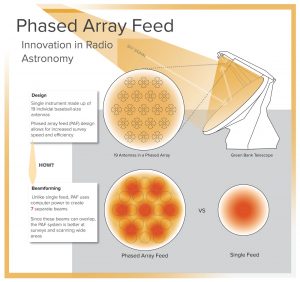
Innovation Advances ‘Phased Array Feed’ Imaging System
Infographic demonstrating the layout of the newly designed Phased Array Feed receiver that was tested on the Green Bank Telescope.
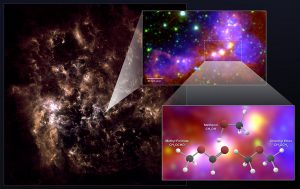
Stellar Embryos in Nearby Dwarf Galaxy Contain Surprisingly Complex Organic Molecules
Astronomers using ALMA have uncovered chemical “fingerprints” of methanol, dimethyl ether, and methyl formate in the Large Magellanic Cloud. The latter two molecules are the largest organic molecules ever conclusively detected outside the Milky Way. The far-infrared image on the left shows the full galaxy. The zoom-in image shows the star-forming region observed by ALMA. It is a combination of mid-infrared data from Spitzer and visible (H-alpha) data from the Blanco 4-meter telescope.





